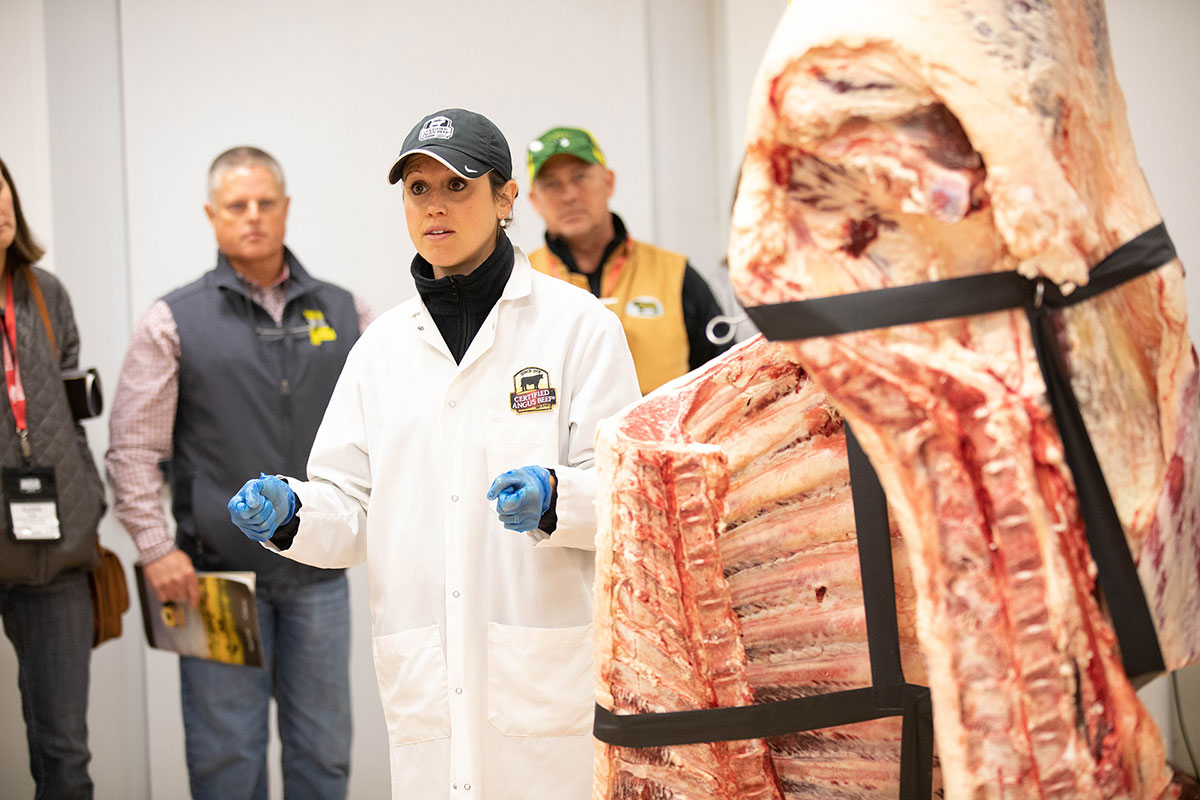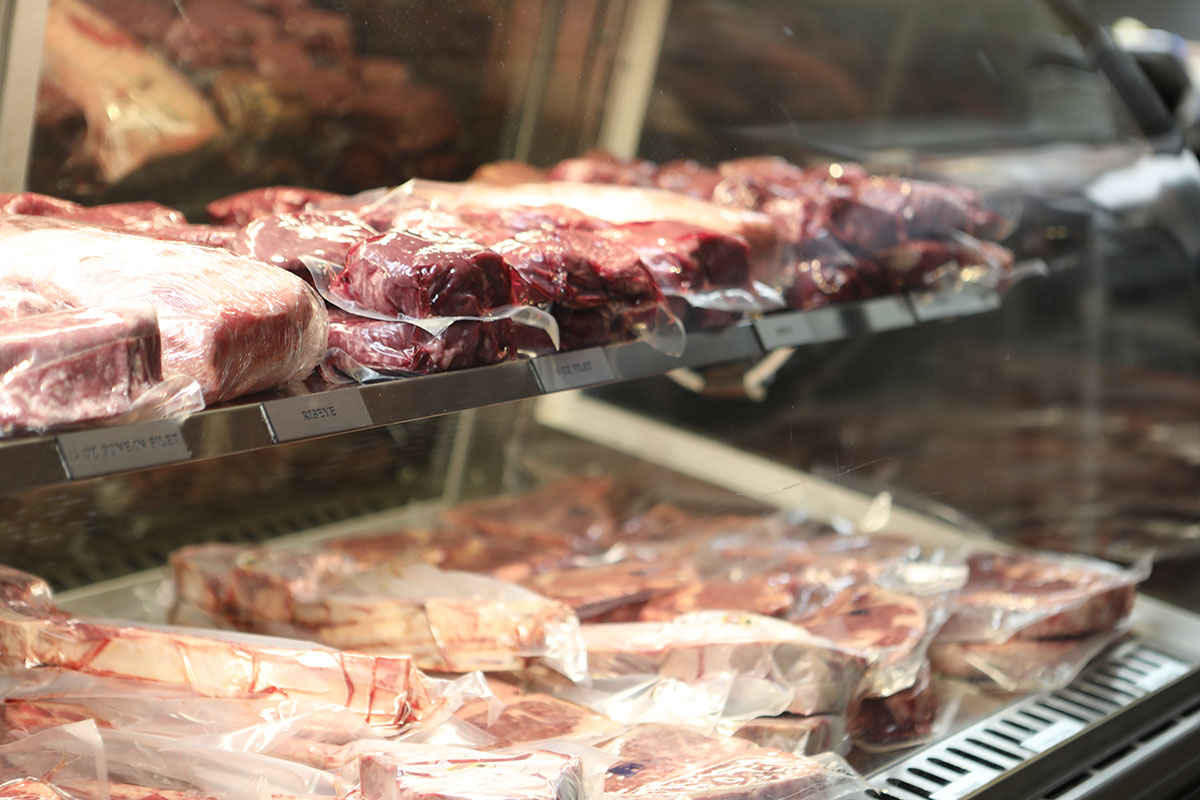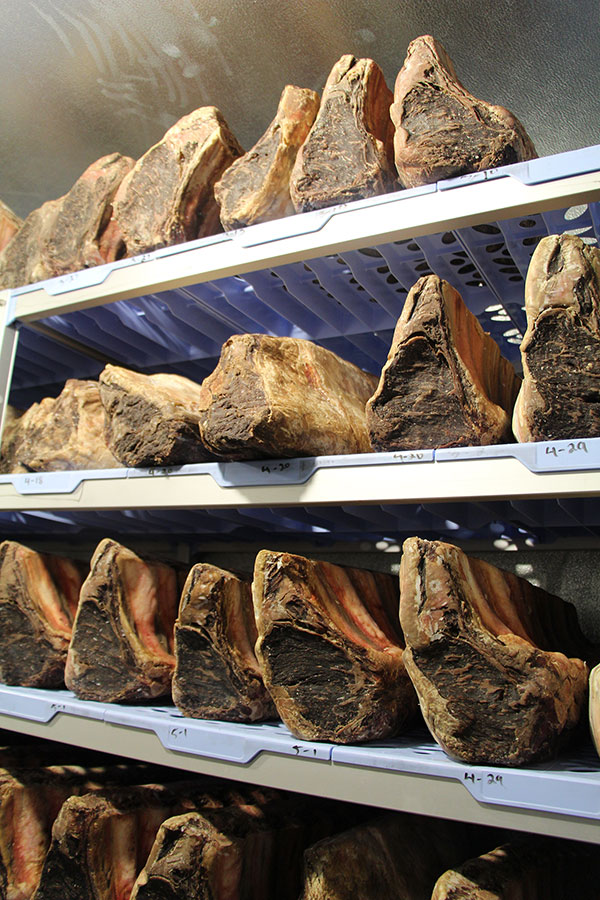
Like fine wine, premium beef is better with age
By: Miranda Reiman
To make the best beef better.
If the process of beef aging had a tagline, that twist on the traditional 4-H mantra would be it.
At its core, aging is just as it sounds: letting fresh beef get just a little older before going out into the marketplace.
“It improves the palatability,” says David O’Diam, director of retail for the Certified Angus Beef ® (CAB®) brand. “It improves the tenderness of beef, and it improves the way that beef eats for consumer satisfaction.”
A general rule of thumb? “More days is usually better,” he says, “to a point.”
There are two types: wet aging, from leaving the product in its vacuum-sealed bag to retain moisture. And dry aging, where it is exposed to the open air of a temperature- and humidity-controlled cooler.
“In both types, naturally occurring enzymes in the meat break down muscle fibers,” says Diana Clark, CAB meat scientist. “With wet aging, what goes into a bag is pretty much what comes out of the bag, only more tender.”

‘Funky’ flavor
Dry aging, however, has a little more mystique. In foodie circles it’s called “artisanal” or “old world” and “earthy.”
Meat scientists like O’Diam and Clark call it “more robust.”
Beef is about 75% water, so when meat is exposed to the open air, it loses moisture.
“It concentrates that flavor,” O’Diam says. “Think of a wine reduction sauce. We take that flavor that’s in the full bottle of wine and really reduce that down to where the flavor becomes much, much more intense in just a smaller format. It’s the same concept within dry aging.”
But it’s the mold that grows on the bark, or the outside of the subprimal, that adds to the character of the meat.
“There’s natural microflora that grow on the outside that add to its flavor, but then they’re trimmed off as it’s portion cut,” Clark explains. “Different parts of the country have different flavor notes, just based on their natural environments. So a dry-aged steak in New York might not be the same as one you have on the West Coast.”
Most beef served at restaurants has been wet aged around 21 days. In fact, CAB requires that of its licensed foodservice distributors. Beef in retail meat cases varies greatly, from a few days to several weeks based on logistics.
“In the retail business, it’s all about shelf life and how the product looks to the shoppers. People buy with their eyes,” O’Diam says.
Dry aging is far less common, representing a small fraction of all beef sold, but it is a growing trend.
Google data from its search engine shows the term, “dry aging” is searched for twice as often now compared to five years ago.
“We look at foodservice as kind of the signal carrier or the flag carrier, so what we see taking place at foodservice, typically a few years behind that would be retail,” O’Diam says. “Right now, dry aging is something they’re talking about as a way to differentiate.”
Stores such as Market District in Ohio and Pennsylvania, Reasor’s in Oklahoma and Schnucks in St. Louis have started featuring a dry-aged meat case as an upscale option for their shoppers.

Not for the cost conscious
It’s all a balance. Beef marketers need to look at what their customers want, while also serving it up at a price they will pay. Dry aging does add to the ticket.
“We are already taking a fairly expensive piece of meat and drying that down,” O’Diam says. “That means a little bit less weight, which means price goes up a little bit higher. It can be a little bit of a cost inhibitor there, but the end product is pretty special.”
A wet-aged striploin may yield 85% after trimming and cutting, while dry aging for 28 days makes that 65%.
There’s economic loss due to that evaporation and later trimming off the dried crust, coupled with added labor and equipment. The cost to consumers is at least a third higher than the wet-aged alternative.
It’s a process that is centuries old, but “there was a time not so long ago that food scientists in this country made a move away from traditional dry aging, introducing techniques that stopped the growth of mold,” Clark says.
Luckily for some of the more adventurous diners, it’s coming back in vogue.
“Dry aging is something that you either love or you hate it,” O’Diam says.
The only way to know where your preference falls is to try it, he says.
“In New York, the vast majority of the steaks are dry aged, where folks in the Midwest are more accustomed to wet aging,” he says. “It’s not only a cost decision, but also a customer decision, on what they demand.”
There’s one thing that beef taste-panel studies and other meat science work agrees on: aging is vital to improve eating satisfaction.
“Failing to age beef doesn’t hurt it, but it will prevent the piece of meat from reaching its full potential,” Clark says, especially since it does a lot more to enhance tenderness than it does flavor. “Aging cannot enhance the flavor of a Select piece of beef to the level of a highly marbled CAB steak.”
But it can elevate any steak, making that CAB and Prime even better.
It takes time, but just like a well-aged bourbon or fine bleu cheese, some things are worth the wait.
Originally ran in the Angus Journal.
You May Also Like…
$100,000 Up for Grabs with 2024 Colvin Scholarships
Certified Angus Beef is offering $100,000 in scholarships for agricultural college students through the 2024 Colvin Scholarship Fund. Aspiring students passionate about agriculture and innovation, who live in the U.S. or Canada, are encouraged to apply before the April 30 deadline. With the Colvin Scholarship Fund honoring Louis M. “Mick” Colvin’s legacy, Certified Angus Beef continues its commitment to cultivating future leaders in the beef industry.
Raised with Respect™ Cattle Care Campaign Launched This Fall
Raised with Respect™ was developed as part of a strategic cattle care partnership between Sysco and CAB. The collaboration focuses on supporting farmers and ranchers, equipping them with continuing education to stay current on best management practices and helping to increase consumer confidence in beef production.
Quality Wins, Again
Sara Scott, Vice President of Foodservice for Certified Angus Beef, emphasizes the importance of taste over price in the beef market during the Feeding Quality Forum. As consumer demand for high-quality beef grows, Scott highlights the need for increased supply and encourages communication with packer partners to meet the demand for Prime beef.




